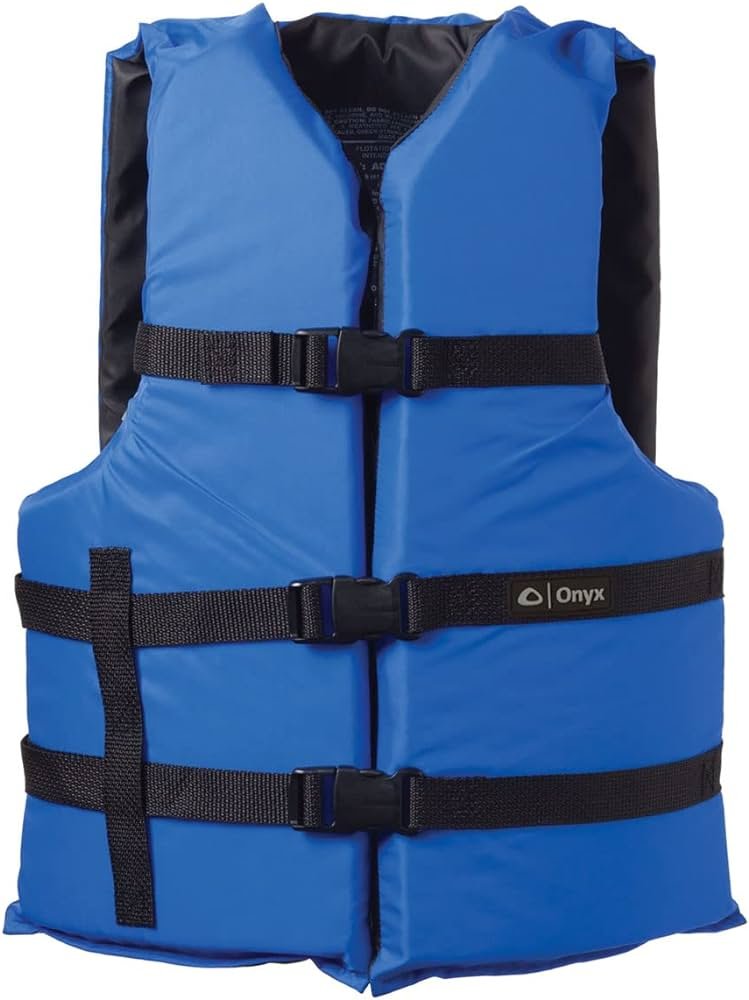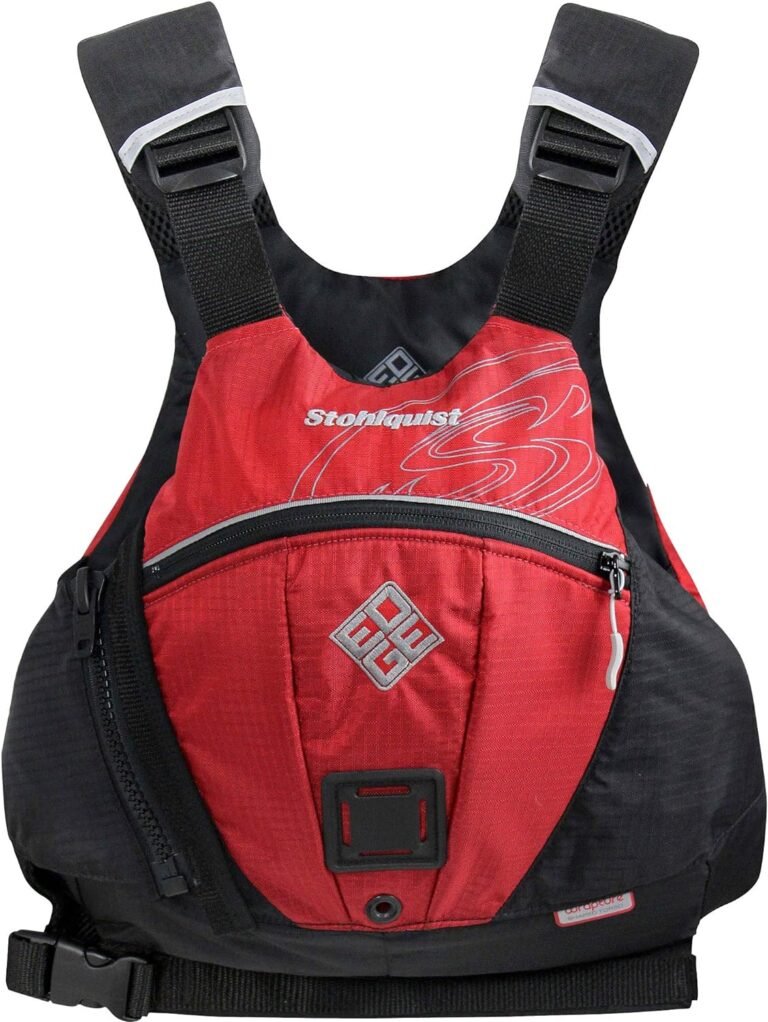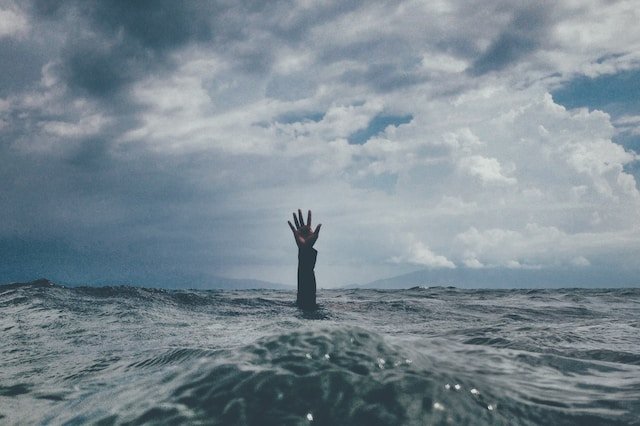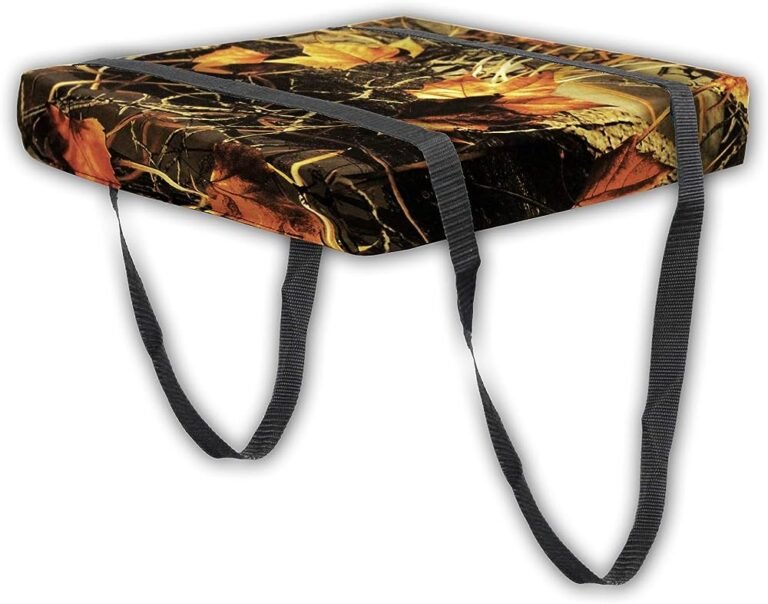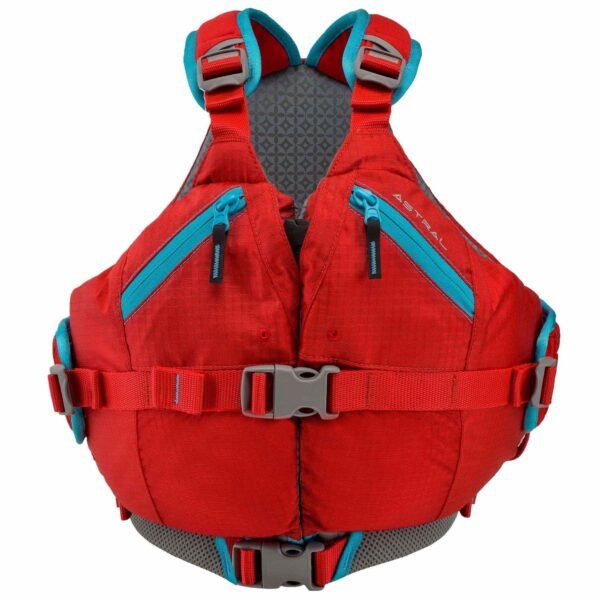What Causes A PFD To Wear Out Over Time?

The PFD (Personal Flotation Device), also known as a life jacket, is a life-saving piece of equipment for people stranded in the water. The device helps keep the user afloat and safe while they await rescue.
Over time, however, a PFD can wear out and may ultimately fail to protect the wearer in the event of an emergency. In this article, we cover the causes of wear and tear in PFDs and how to take proper care of your equipment.
What are the functions and benefits of PFDs?
PFDs are important safety equipment for boaters. They protect us from the elements and can help save our lives if we are in a boating accident. PFDs have several functions and benefits that make them essential for safe boating.
- Protection from the elements
- Floatation device
- Thermal insulation
- Buoyancy and Stability
- Navigation
Why is a PFD important on a watercraft?
A personal flotation device is important on any watercraft because it can save a person’s life in the event of a collapse.
PFDs should be worn by everyone on a boat regardless of their level of experience and should always be checked before boarding.
In addition to saving lives, wearing a PFD can also reduce the severity of injuries in the event of capsizing. They can be used as a life jacket to keep someone afloat if they fall overboard. A person can lose consciousness if they become submerged in water and do not have a PFD on.
How do PFDs wear out over time?
PFDs are important safety devices for boaters and water sports participants, but they can also wear out over time. The lifespan of a PFD depends on a number of factors, including the type of PFD and how it is used.
PFDs wear out over time due to the sun’s UV rays and saltwater. The fabric will fade and the straps will break down. The most common cause of PFD wear is immersion.
Over time, the fabric and foam inside a PFD will become saturated with water, making it heavy and difficult to swim with.
What are the signs that your life jacket needs to be replaced?
If you have ever been in the water and felt like you were drowning, then you know that life jackets are essential. These small pieces of clothing can save your life in several unpredictable situations.
However, if your life jacket is not properly fitted or if it is damaged, it may not provide the protection that you need. Here are five signs that your life jacket may need to be replaced:
- You feel like you are constantly struggling to stay afloat. The life jacket doesn’t seem to be providing adequate buoyancy.
- it’s been more than 5 years since your last life jacket replacement.
- You’ve lost weight and the life jacket is now too big. The life jacket doesn’t fit you properly.
- The life jacket has been damaged, it is torn and in bad shape.
- it’s difficult to inflate the life jacket
Causes of PFD wearout
- UV radiation
- Moisture and humidity
- High temperatures
- Tear or damage to the fabric from rubbing against other objects in the boat.
- Exposure to saltwater and chlorine can cause deterioration of the fabric.
- Damage to the main zipper from rubbing against other objects in the boat.
- Debris getting caught in the zipper.
- Damaged zippers due to the use of a sharp knife or other sharp instruments.
- Excessive use
- Poor maintenance
- Wrong usage
- Normal wear and tear
Types of Personal Flotation Devices
There are many types of personal flotation devices. These vary depending on the purpose they are used for, whether they are for recreational or commercial use, and the type of materials that make them buoyant.
Some common types of PFDs include lifejackets, inflatable rafts, and personal floats. Each has its advantages and disadvantages, so it is important to choose the one that is best suited to your needs.
1. Type I PFD
These are also known as Offshore Lifejackets. Type I PFDs are often the first piece of equipment a sailor buys, and for good reason. They’re reliable, compact, and easy to use. But like any piece of gear, they can be dangerous if used incorrectly.
2. Type II PFD
Type II PFD, also called Near-Shore Buoyant Vest, is a type of personal flotation device (PFD) that is designed to provide buoyancy assistance in the event of a sudden wave or current change.
It is typically worn around the waist and features a neoprene belt and shoulder straps. It is similar to a life jacket, but it has more pockets and compartments for storage.
Type II PFD can be worn in many different ways, including as a backpack, belt, or shoulder bag. They are also often used as part of an emergency survival kit.
3. Type III PFD
This is a life jacket that is specifically designed to keep a person’s head above water. This type of life jacket is typically worn by swimmers, surfers, and other people who spend time on the water.
Type III personal flotation devices (PFDs) should be worn at all times when on the water. They are especially important for children, the elderly, and those with medical conditions that make them more susceptible to drowning.
The design of a type III PFD allows the wearer to move around and swim freely, which makes it perfect for activities like surfing or swimming. A Type III PFD will provide enough buoyancy to keep a person afloat even if they are unconscious or have lost much of their body weight.
4. Type IV PFD
A type IV personal flotation device, or PFD, is a life jacket specifically designed for whitewater rafting and other water sports.
Unlike the more common type III PFDs, which are bulky and often interfere with movement, type IV PFDs are slim and lightweight, making them ideal for use in fast-moving water.
They are also highly visible in bright colors, which makes them easy to spot in case of an emergency.
5. Type V PFD
Type V PFD is an upgrade of the original Type IV PFD, designed to more effectively protect pilots from environmental threats and improve survivability in case of a crash.
It is a personal flotation device that is specifically designed to keep a person afloat in cold water. Improvements over the Type IV include thicker and more durable material, as well as increased airflow and drainage.
It is made of thick insulating material that helps to trap heat and keep the wearer’s body warm. It also has a high collar to prevent the user from becoming wet and cold. It can be inflated with air from an air compressor or by using a suitable deflation device.
In conclusion, Safety is the watchword. You should enjoy boating responsibly and ensure your safety by wearing your Flotation Device. Several factors can cause a PFD to wear out over time.
Sun exposure, water exposure, and improper storage can all contribute to the degradation of a PFD. It is important to inspect your PFD regularly for any signs of wear and tear and to replace it when necessary.
Frequently Asked Questions
How to care for a PFD
When it comes to taking care of a personal flotation device, there are a few things you need to keep in mind. The first is that PFDs do require some maintenance to stay effective. Second, not all PFDs are created equal – some are more durable and easier to take care of than others. Finally, knowing how to properly store and clean your PFD can help ensure that it’s always ready for use when you need it.
To start with, PFDs should be rinsed off with fresh water after each use, regardless of whether they got wet or not. This helps remove any salt or other residue that could damage the fabric over time. They should also be air-dried away from direct sunlight, as this can also fade the fabric over time.
If you are using an inflatable, you should also store it in a dry place to avoid damage from condensation. Lastly, any PFD that is not maintained properly can lose its effectiveness over time. If your PFD starts to leak, it’s important to take care of it right away.
How often should the inflator on a Type V life jacket be checked?
The Coast Guard requires life jacket wearers to perform a monthly inflation check on their devices, but how often should the inflator on a Type V life jacket be checked?
The answer is not as straightforward as one might think. While Coast Guard regulations mandate that all inflatable life jackets be checked monthly, the exact interval for checking an individual device’s inflator will depend on its age and how it has been stored.
If an inflatable life jacket has been stored in a hot environment, for example, then its inflator should be checked more frequently than if it had been stored in a cold environment. The inflator on a type V life jacket should be checked at least once every 6 months and more often if the life jacket is used frequently or if the inflator is not functioning properly.
Inflators on type V lifejackets must be inspected and replaced as needed according to the manufacturer’s instructions. The frequency of inspection and replacement will depend on a variety of factors, including use, age, and inflation pressure.
Can you restore a worn-out PFD?
There’s nothing worse than investing in a new piece of gear and then watching it wear out before your eyes. This is especially true for personal flotation devices (PFDs), which can often be expensive and difficult to replace. So what can you do if your PFD starts to show signs of wear and tear? Is it possible to restore it to its original condition?
The short answer is yes, you can restore a worn-out PFD. However, the process is not easy, and it will require some time and effort on your part. You’ll need to sand down the fabric until it’s completely smooth, and then apply a new coat of sealant or paint. Be sure to follow the manufacturer’s instructions closely, as there is a risk of damaging the PFD if you don’t do things correctly.
Worn-out PFDs are common sights on the water. Unless they are replaced, they can become more and more fragile over time, making them less effective in preventing drowning. Fortunately, there is a way to restore a worn-out PFD, by replacing the fabric and foam layers.
When should you discard a PFD?
When it comes to life jackets, there is a lot of debate on when to discard them. Some say that if they have not been used in a year, they should be discarded. Others say that if the jacket has not been in contact with water in two years, it should be discarded.
The Coast Guard, however, says that a life jacket has an indefinite lifespan as long as it is not damaged. When should you discard a personal flotation device? You should do away with your PFD if:
- The device becomes inoperable or damaged.
- The device does not meet safety requirements.
- The device poses a fire hazard.
- It becomes torn, rips, or falls apart.
- If the fabric is excessively sweaty, dirty, or wet, it should be replaced.
How to test if a PFD is still good
In the event of an emergency, it is crucial to have a personal flotation device (PFD) that will keep you afloat. However, PFDs expire, so it is important to know how to test if a PFD is still good. In this article, we will discuss how to test if a PFD is still good using both the float and sink tests.
Testing a personal flotation device (PFD) is an important safety step to take before using it. There are several things you can do to test your PFD to see if it’s still good.
- Check the inflation pressure. To check the inflation pressure, inflate the PFD until it’s full and then release the air by pressing down on the inflation valve. The inflation pressure should be high enough that the device floats when placed in water. If the inflation pressure is low, you should inflate it to the proper pressure before using it.
- Check the floatation. To check if the PFD floats in water, you can use either the sink or float test. The sink test involves adding a little bit of saltwater to the device and then placing it in the water. If it floats, it’s good. The float test is a bit easier because you can’t add saltwater to the PFD. Instead, you just place the PFD in a container of water. If it floats, it’s good.
- Another way to test a PFD is to submerge it in water and check for leaks.
How can you ensure that your PFD lasts as long as possible?
PFDs (personal flotation devices) are an essential piece of safety gear for any water sport. However, like any other piece of equipment, they can wear out over time. Here are some tips to help ensure that your PFD lasts as long as possible.
- Avoid exposing the PFD to direct sunlight
- Check the condition of your PFD regularly. Wear and tear can lead to leaks, which can make you more prone to drowning.
- Don’t overload your PFD.
- If your PFD becomes wet, do not try to dry it out. Allow the PFD to air-dry completely before using it again.
- Don’t use your PFD if it’s damaged or if the straps are worn through.
- Make sure to always follow the manufacturer’s instructions for cleaning and storing your PFD.
How often should a PFD be replaced?
A personal flotation device, or PFD, is one of the most important pieces of safety equipment a person can own when spending time on or around the water. But how often should you replace your PFD? The answer to that question depends on a variety of factors, including how often the PFD is used and how well it is maintained.
A personal flotation device, or PFD, should be replaced every five years, according to the Coast Guard. This is regardless of how often it is used or if any damage occurs. A new rule went into effect in early 2018 requiring all recreational boaters over 16 years old to have a PFD.
That said, there are some important things to keep in mind when it comes to replacing a PFD. For example, if the PFD has been exposed to saltwater, it will need to be replaced more often. Likewise, if the device has been damaged or shows any signs of wear and tear, it should be replaced immediately.
Age and type of PFD can affect when it should be replaced. PFDs are designed to provide both buoyancy and airflow to help keep the wearer afloat in water.
When should I put on my PFD?
Are you ready for some summer fun? The sun is shining, the breeze is blowing, and there’s nothing better than spending a day out on the water. However, there are some things you need to remember before hitting the waves. Among these essentials is wearing a Personal Flotation Device (PFD).
PFDs can help keep you safe when out on the water, but when should you put them on? Many people wait until they feel like they need it, but by then it may be too late. According to the United States Coast Guard, you should put on your PFD before you need it.
Some Tips:
- Always wear your PFD when boating, even if you only plan on staying in the harbor or when anchored out.
- If your boat has a motor, always wear a PFD when underway.
- If you’re fishing or crabbing, always wear a PFD while in the water.
- If you have small children, put on your PFD when they ride in the boat, and don’t let them out until they’re wearing their own.
Are PFDs difficult to put on in water?
In recent years, more and more people have been opting to wear personal flotation devices (PFDs) when participating in water-based activities. However, a lot of people seem to think that PFDs are difficult to put on in the water, which is not always the case.
Putting a personal flotation device, or PFD, on in water can be difficult if you are not used to it. There are a few different ways to do it, but the most common way is to put the device over your head and fasten it down with the straps. When a person steps into the water, their body is immediately subjected to a cool temperature.
As a result, some people find it difficult to put on a Personal Flotation Device (PFD). There are a few different ways to put on a PFD, but the most common way is to tie it around the waist. This can be difficult in water that is cold and choppy.
However, as a rule of thumb, endeavor to always wear your PFD before setting sail.
How to put on your PFD in water
In water, a personal flotation device (PFD) can keep you safe by providing buoyancy if you find yourself in trouble. Knowing how to put on your PFD in water can be the difference between life and death. Here is a guide on how to do it:
- Find a clear space in the water where you can safely practice.
- Remove any clothing or accessories that may get in the way of putting on your PFD.
- Unzip the PFD and hold it open with the straps facing down.
- Step into the PFD, making sure your feet are positioned at the bottom of the leg holes.
- Reach up and grab the shoulder straps, then pull them over your head so the PFD rests on your shoulders.
- Step out of the PFD, leaving it hanging and open on your back. Practice putting on your PFD in the water, to ensure you can do it safely with ease.

